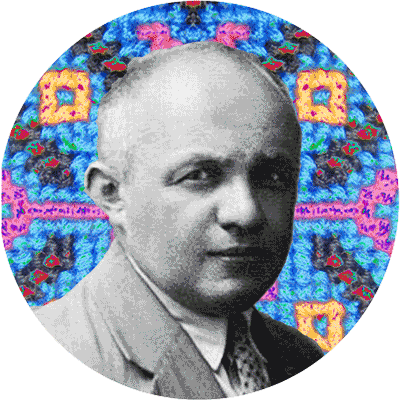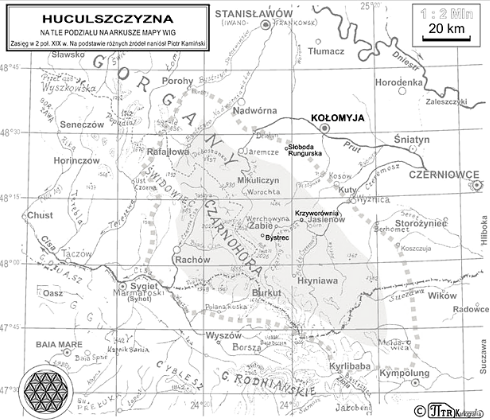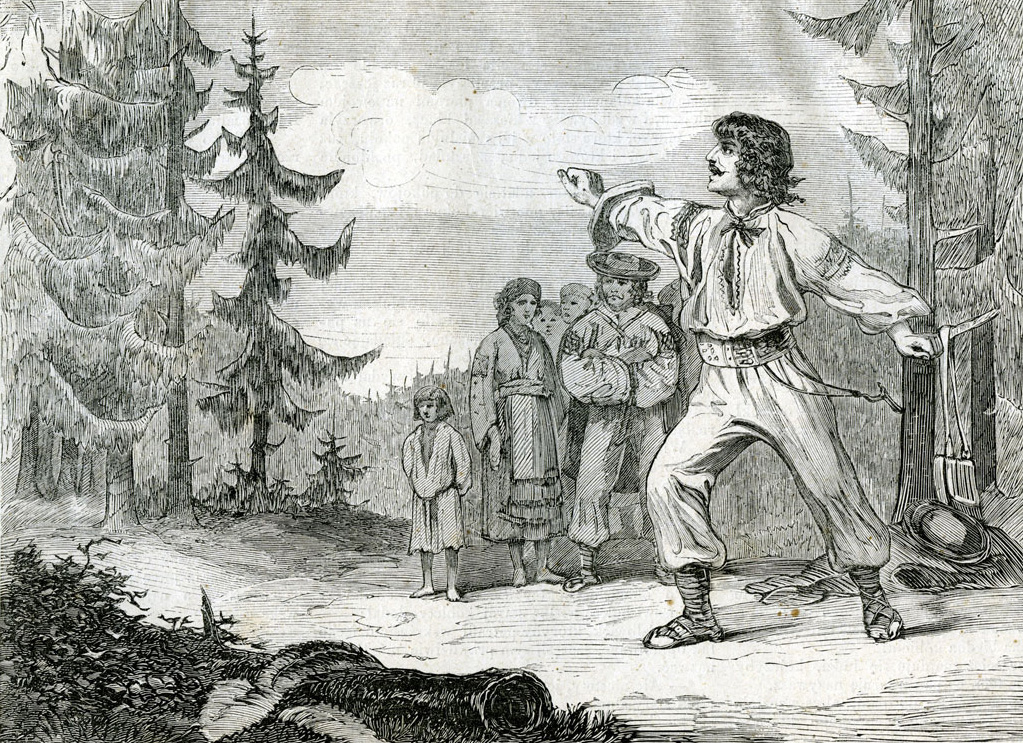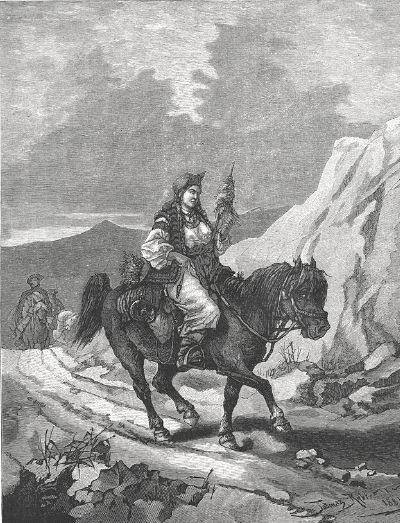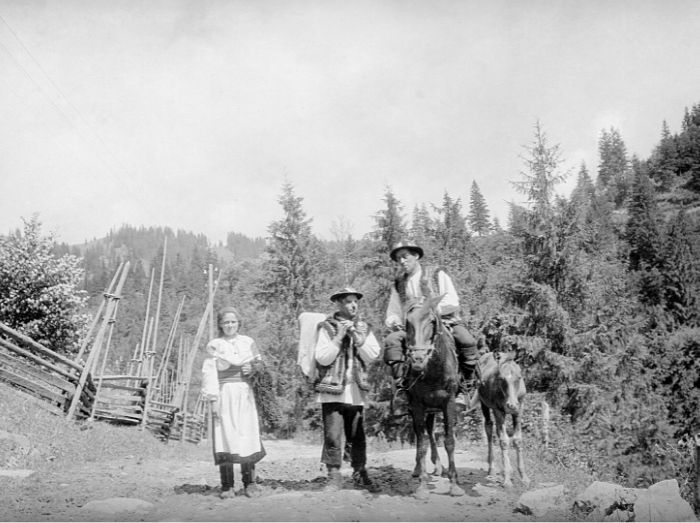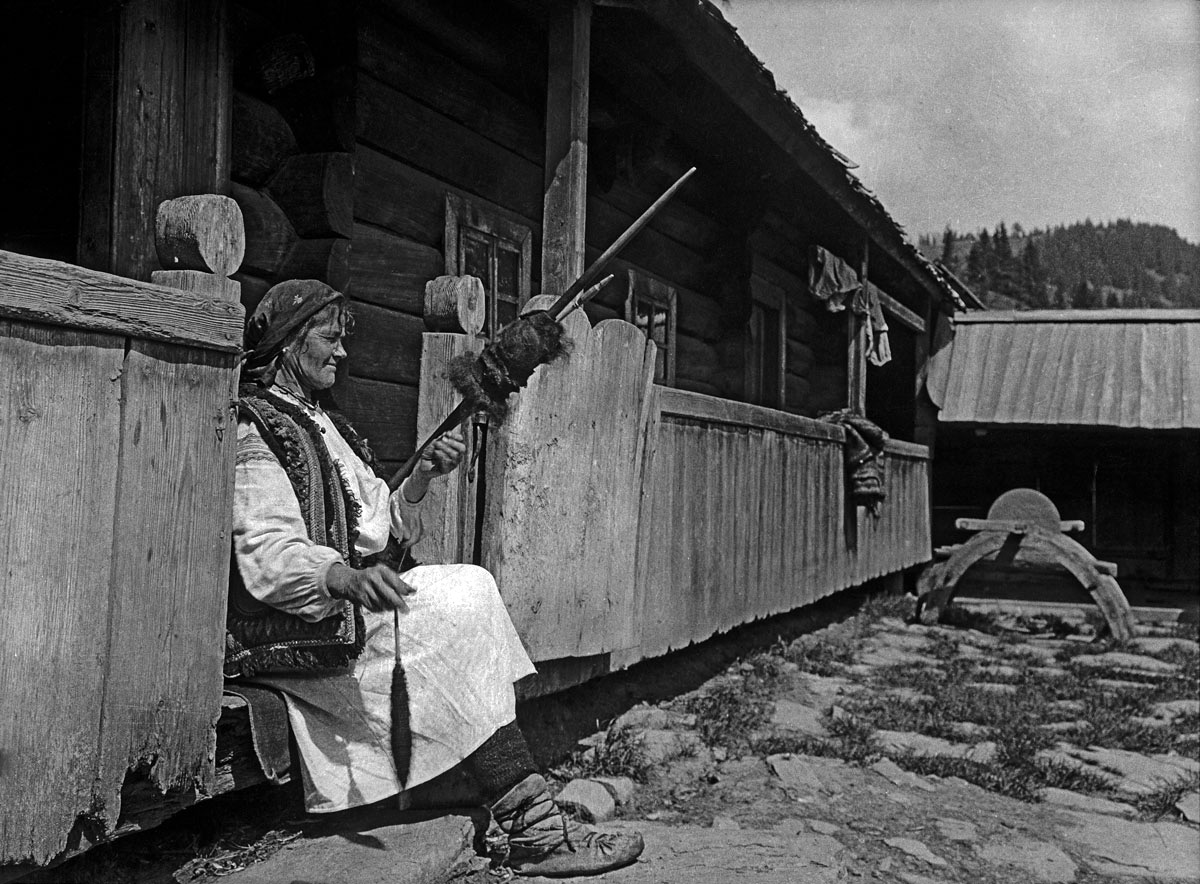Dialog on Soul and Fate
Stanislaw Vincenz (1888—1971)
THE HUTSUL REGION
ABOUT EXHIBITION

The Hutsul Region (Wierchowina) — a region in the Eastern Carpathians, in the basin of the upper Prut and Czeremoszes (White and Black), inhabited by the Hutsul highlander tribe (one of the three, next to Boykos and Lemkos, most important Ruthenian ethnic groups in former Galicia). First, it owed its fame to an outlaw Oleksa Dovbush, later to the heroes of Jozef Korzeniowski’s drama Karpaccy górale (Carpathian Highlanders) (hence the song A red belt, and a weapon in the belt …). Owing to the paintings by Teodor Axentowicz, Fryderyk Pautsch and Franciszek Sichulski, the exotic nature of the Hutsuls preserving the oldest traditions of pastoral culture, the inaccessibility of the mountain forest, and the power of the Chornohora massif (the highest peaks: Hoverla, Brebeneskul and Pip Ivan), it has become an inherent part of cultural memory.
K. Młodnicki sketched from life, drawing, “Kłosy” 1872,
the collection of PME
A drawing based on a painting by T. Rybkowski, 1881, “Tygodnik Ilustrowany” 1883, the collection of PME
Hutsuls, 1933, photo by L. Cipriani
“A highlander without highlands is a trivial thing, a giant on stilts! Highlands without a highlander — torpor. But thanks to heavens above the steppes have their Bedouins, Ukrainians and Nogais; The Caucasus has its Circassians, Lezgins, Ossetians and Chechens; Lapland has its dwarfs, Patagonia its giants and the Carpathians have their highlanders. Fortunately, the highlander enlivens the Carpathians, and he is so concerned with them that the nature of one has flowed into the other. Beautiful as a pine, lazy as a Carpathian rock, and proud at the same time, the highlander has become a walking mountain”.
Bazyli Załoziecki, Obrazki z cyrkułu kołomyjskiego [Images from Kolomyja district], 1854
A Hutsul, 1933, photo by L. Cipriani
A Hutsul, 19th century, the collection of MEK
“Piotr, as a novel character, appeared to me only a few years after the First World War. I saw him in Paris in 1928 on the asphalt glistening with rain on the Place de la Concorde, with cars racing in all directions. The image of a peasant from a distant world of primitive civilization imposed on my imagination by the force of a stark contrast. He was a shepherd from the Carpathians and, with a whip in his hand, he was walking barefoot among the honking and humming cars, holding the reins of a pair of Hutsul horses”.
Jozef Wittlin, Postscriptum do “Soli ziemi” po 35 latach [Postscript to “The Salt of the Earth” after 35 years], 1970)
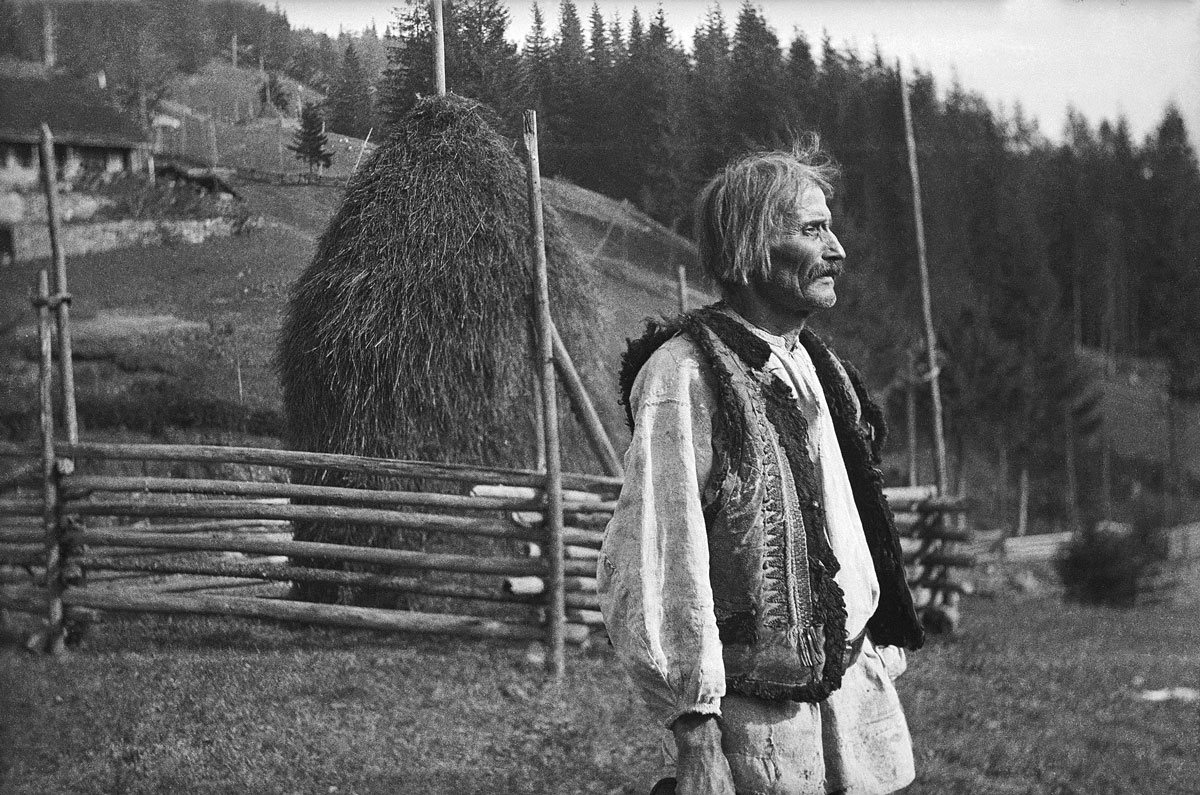
A Hutsul, 1933, photo by L. Cipriani
A Hutsul woman, 1933, photo by L. Cipriani
“Even a two-week stay in the mountains does not give satisfaction, because both the mountains and the people [Americans] inhabiting them lack what we used to call a soul and what was abundant in the Hutsul region, which you know so much better than I do. Here people are the same in the mountains and in the valleys: boring, graceless, dreaming about refrigerators (they have them anyway) and about television, the purchase of which is the ultimate goal of existence. And for example Maria Zorilo in Kosow, an illiterate who wove a rug all winter to sell it in the summer, shines in my memory to this day as the embodiment of charm, wisdom and “humanity”, in the good old sense that no longer exists today which is why I put it in quotation marks. “
Jozef Wittlin, a letter to Stanislaw Vincenz, 1949
“I think that if you, Stempowski, Czapski and a few other such people were concentrated in a place where I could also stay, we would jointly establish a new nation with a Hutsul-Hasidic tinge, because it is somehow difficult to withstand existing nations.“
Józef Wittlin, a letter to Stanisław Vincenz, 1950
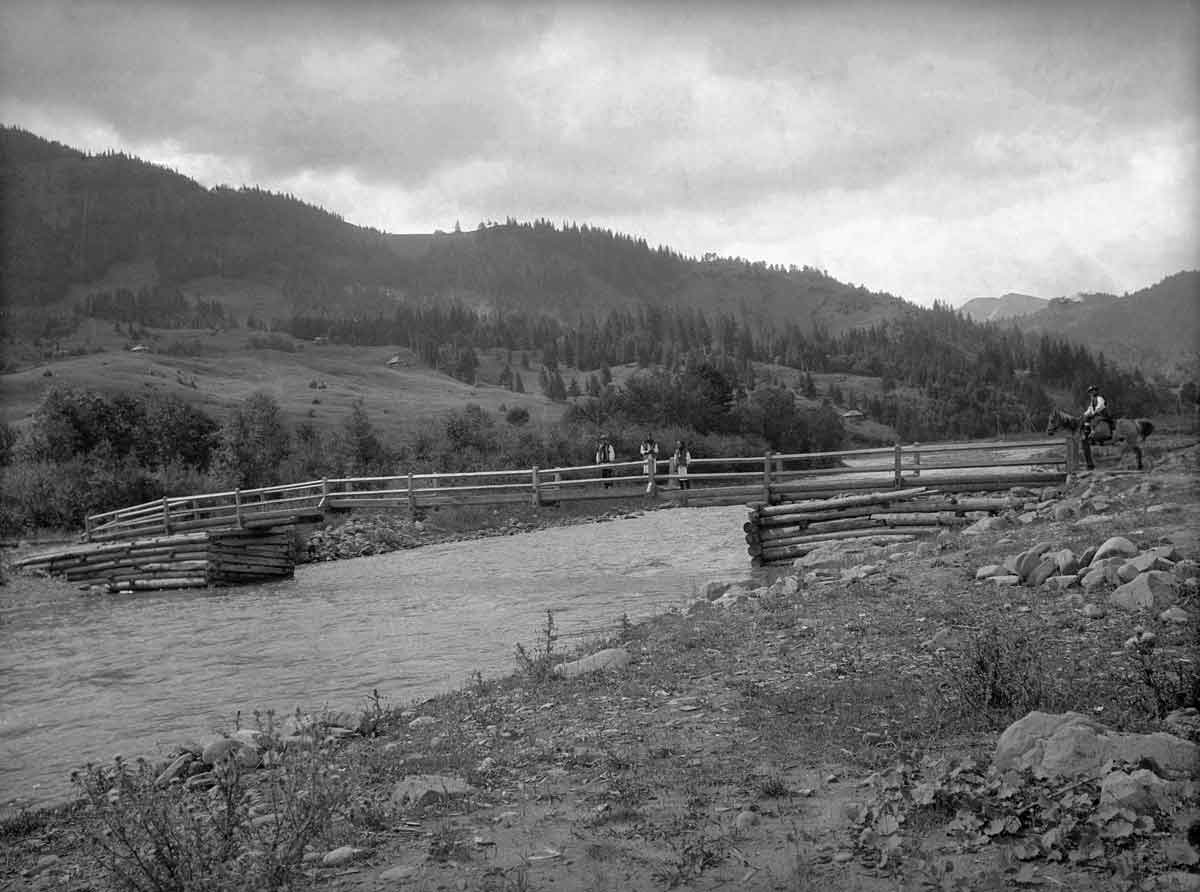
The Czeremosz, 1933, photo by L. Cipriani
“The greatest magical power is in the Czeremosz, a mountain river which flows in the shade of hundred-year-old fir and spruce trees. Its waters froth swiftly in the stone bed, burble on the gravel shoals, ring the stones, mumble in the narrows, roar and rumble in the rocks, and each of these tones is accompanied by the low, slightly lagging behind, dark, bass echo of the forest. It seems to me that if I were blind, old, consumed by fever and madness, and I heard the noise again, the years of wandering astray would fall off me like rags of misfortune and I would become myself again”.
Jerzy Stempowski, Dziennik podróży do Austrii i Niemiec [A Travel Journal for Austria and Germany], 1945
